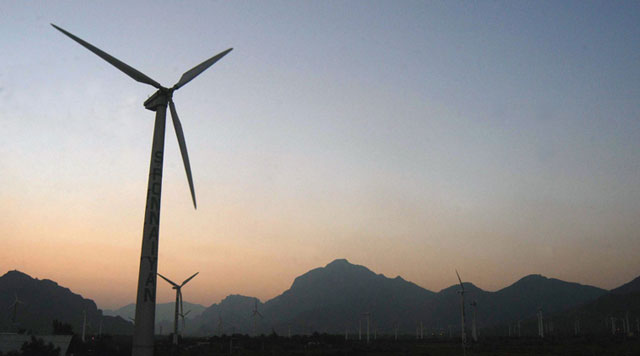
Energy transition is an ongoing global effort to decarbonise the energy sector to achieve net zero carbon emissions by 2050 in a secure, affordable, and sustainable manner.
A paradigm shift is under way across the energy value chain, with trillions of dollars being committed to the production and usage of green electrons and molecules along a rapidly sliding cost curve.
While wind and solar are now considered mainstream asset classes, massive amount of public and private financing is also going into green hydrogen, electrification of transportation and heating, sustainable aviation fuels, carbon capture and storage, nature-based solutions, reducing the carbon intensity of “hard-to-abate” industrial processes (such as steel, cement, and chemicals), and demand-side management.
From entrenched oil and gas behemoths to nimble clean energy startups backed by venture capital, a virtuous global arms race is now under way to redraw the energy landscape.
While there has been some debate and pushback on the scale and speed of decarbonisation, and the residual role of oil and gas under various scenarios, the energy transition train has left the station due to increasing cost competitiveness (economies of scale), technological advancements, public policy and regulatory incentives, institutional capital inflows, and energy security concerns.
A big stumbling block in achieving the global net zero emissions target, however, is the unavailability and high cost of climate financing for developing countries. Developed countries (USA, EU, and the UK primarily) have recently stepped up to catalyse funding for developing nations to transition to green energy, in the form of grants, low-interest loans and private investments.
South Africa ($8.5 billion), Indonesia ($20 billion), and Vietnam ($15 billion) are the first three countries to receive funding commitments under a Just Energy Transition Partnership (JETP) programme, while India and Mexico are next in the queue.
Pakistan aims to increase the share of renewable energy to 60% by 2030 to achieve its net zero emissions target under the Paris Agreement on Climate Change.
However, due to weak macroeconomic fundamentals and a distressed energy sector, the country will struggle to attract the billions of dollars required to achieve this objective, including its capacity to adapt to the ravages of frequent floods and heat waves.
Pakistan, therefore, also needs a tailoured JETP programme backed by policy incentives, a pipeline of bankable projects, and credible local private business groups and public sector entities co-participating in these projects.
Fundamentally, however, we first need to radically reform and overhaul our energy sector and governance framework to attract the local and foreign capital required for its turnaround.
In a liberalised regime, the state provides a level playing field to all legitimate participants, and neither chooses winners and losers nor intervenes in the market to set prices or allocate quotas other than during emergencies.
While buying a distressed LNG cargo here, and a discounted crude cargo there, are helpful short-term initiatives, they do not address the root causes of the malaise.
For the executive and bureaucracy to cede control of the sector, and do away with sovereign-backed energy contracts, requires a paradigm shift in thinking and approach albeit within our peculiar social, economic, and political ecosystem.
For instance, we need to quickly operationalise the wholesale power commodity market (CBTCM) and wheeling regime to facilitate bilateral corporate contracts between multiple sellers and bulk buyers in lieu of the single sovereign buyer model.
If we apply the same overarching principle to imported LNG, the export industries can be asked to directly procure gas and electricity from the domestic and international market to meet their energy needs without subsidy support from GOP.
Since there are no free lunches in life, the real losers would be the state-owned power and gas companies saddled with expensive legacy “take or pay” energy contracts and a shrunk industrial and commercial customer base, but the overall economic impact would be net positive.
This “stranded asset” cost should be treated as national (not sectoral) debt reflecting prior policy actions and mistakes by successive governments.
Likewise, rather than the government prescribing uniform petrol and diesel prices on a fortnightly basis, it should allow differentiated pump pricing and letting the private oil marketing companies compete with PSO for market share.
In a deregulated marketplace, the government would not have to offer special subsidy schemes, or guaranteed returns and offtake contracts, to existing and new oil refineries for upgrades and greenfield investments, respectively.
Given its stretched balance sheet, the state’s primary role in the energy sector should be to enact a set of enabling policies, alongside an independent regulatory framework to prevent price manipulation and cartelisation, to facilitate free flow of energy products between private sector buyers and sellers.
It could, however, continue to manage the pricing and allocation of indigenous natural gas to domestic customers as per its stated socio-economic policy and constitutional provisions.
Likewise, the state may still offer sovereign guarantees and offtake contracts to select nuclear and large dam projects for national security purposes.
Moreover, it will always retain the policy toolkit to impose indirect taxes on various energy products or fund targeted subsidies for low-income segments of the population through social welfare programmes such as BISP.
The state should do whatever it takes to reprofile the outstanding debt of the more recently commissioned, and upcoming, IPPs to give the power consumers some breathing space over the next few years.
Contrary to conventional wisdom, the topmost reasons for the Rs2.5 trillion circular debt, and high tariffs, are the unaffordable fixed capacity charges and shrinking electricity demand, and not line losses in the transmission and distribution sector.
Nonetheless, the management of all state-owned DISCOs must be privatised as soon as possible, alongside a more equitable financial sharing arrangement between the federation and provinces as per the spirit of 18th Amendment and NFC Award.
Pakistan’s energy sector will remain an albatross around its economic neck until there is political will to execute market-based structural reforms and a collective capacity to bear some inevitable teething pains during a five-year turnaround phase.
The writer is former special assistant to the prime minister on power and petroleum
Published in The Express Tribune, July 3rd, 2023.
Like Business on Facebook, follow @TribuneBiz on Twitter to stay informed and join in the conversation.


1737272580-0/BeFunky-collage-(5)1737272580-0-165x106.webp)









1737185197-0/Express-Tribune-(2)1737185197-0-270x192.webp)
1737188551-0/Untitled-design-(97)1737188551-0-270x192.webp)



1737114296-0/Express-Tribune---News-Desk-(4)1737114296-0-270x192.webp)






COMMENTS (2)
Comments are moderated and generally will be posted if they are on-topic and not abusive.
For more information, please see our Comments FAQ